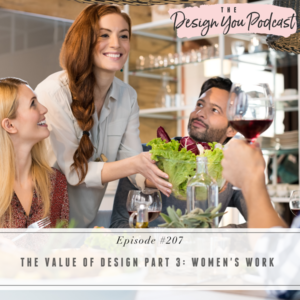
So far in The Value of Design series, we’ve covered creatives vs designers, doers vs thinkers, and today we’re digging into something a little provocative. We’re talking about women’s work. Women’s work is the work that, as women, we are expected to do for free, simply because of our gender or how we identify. It is part of the role we play in the patriarchal society in which we live, and it doesn’t really hold a high value.
You know the type: housework, entertaining, cooking, cleaning, being good with people’s emotions, caregiving, making people feel comfortable, and so on. All of these tasks require a lot of physical labor, but also a lot of emotional labor. And there is a link between these tasks and the tasks we face in the design industry, where we’re expected to complete them for free.
In this episode, I’m diving deeper into the concept of women’s work and encouraging you to get curious about how it could be playing into the value of your services. I’m discussing the difference between men’s work and women’s work and the value of it in the design industry, and what we can do to bring more awareness to the value of our roles and tasks.
We have something exciting coming up at the end of March: Success Week. Stay tuned for all the details!
If you want help creating a business with thriving revenue streams so that you can design the life you really want, get on the waitlist for the next round of my Design You Coaching Program. Inside, you’ll get access to a whole new course where I share my complete design system with you. You’ll receive every template, tool, SOP, worksheet, downloadable, video, and more that I have created and used myself, and receive a complete step-by-step for how to run your full-service projects.





